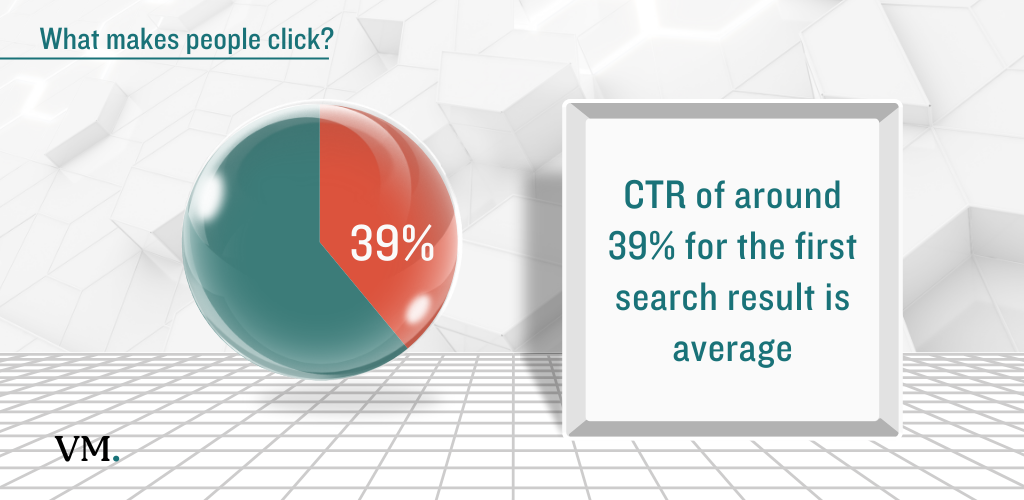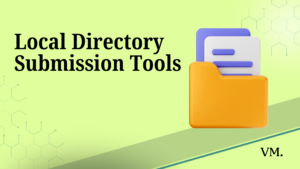Want to get more customers through your door? Of course, you do. It doesn’t matter if you run a local bakery or a digital marketing agency, increasing visibility in local search results is crucial for attracting nearby customers. But, showing up in the search results is only half the battle.
You also have to entice searchers to click through to your website, which is where knowing how to improve local SEO CTR comes in. A high click-through rate signals to search engines that your website is relevant and trustworthy, showing you have what searchers want and are a worthy candidate for a top spot on that coveted first page.
88% of customers check online reviews before deciding on a business. This goes hand in hand with how to improve local SEO CTR, a critical aspect of attracting local customers. But this goes beyond just ranking high in search results; this is about capturing attention and enticing users to actually click. In a nutshell, we are talking about convincing Google you are the best option for their search query.
Standing Out in the Crowd
It all starts with making your business easily discoverable. Registering with Google My Business is a fantastic place to start. It’s free and can significantly boost your local SEO strategy. Why is Google My Business so crucial? It puts your business on the map, literally, both on Google Maps and in local search results.
When people search for businesses like yours in your area, a well-optimized Google Business Profile increases your chances of appearing in the coveted Local 3-pack – the top three businesses featured in the search results. This prominent placement dramatically boosts your visibility, leading to more clicks, calls, and foot traffic. This goes back to improving how to improve local SEO CTR by ensuring accurate and consistent NAP citations across various online platforms.
What Happens When You Pop Up?
Appearing in the Local 3-pack is like having a massive neon sign pointing potential customers right to your storefront. A Local Consumer Review Survey conducted by BrightLocal backs this up. Their study found that 56% of consumers choose a business featured in the Local 3-pack because of the displayed ratings and reviews.
A positive online reputation doesn’t just attract customers – it sways Google’s algorithms in your favor, potentially leading to even higher search rankings. A higher SEO ranking will improve website traffic to your business website.
Why Reviews Matter: The Power of Social Proof
Online reviews are everything in the world of local SEO. Potential customers need reassurance, and what better reassurance than real experiences shared by real people? BrightLocal’s research further highlights the significance of online reviews, indicating that they directly impact a business’s search ranking, click-through rates, and customer trust.
Make Getting Reviews Easy
Encourage happy customers to leave reviews by making the process seamless. You could send follow-up emails after a purchase or service with a direct link to your Google Business Profile or chosen review platforms.
By embedding social sharing buttons on your website or including a call to action on your receipts, you empower satisfied customers to spread the word about their positive experiences, amplifying your reputation organically. Positive customer reviews will increase click-through rates.
Addressing Negative Feedback Professionally
Don’t be afraid of negative reviews. No business is perfect, and the occasional negative review can add authenticity to your online presence. The key is to address them professionally and constructively. Publicly respond to the review, acknowledge their concern, and if possible, offer a resolution or take the conversation offline.
Handling negative reviews gracefully demonstrates transparency and a commitment to customer satisfaction. Review management will encourage customer engagement and help your average CTR.
Think Mobile-First for How to Improve Local SEO CTR
With smartphones becoming our constant companions, mobile optimization is no longer optional. A 2019 study by Uberall revealed that 82% of smartphone users rely on “near me” searches for their immediate needs. Google recognizes and prioritizes mobile-friendliness and has incorporated it as a significant ranking factor. This makes complete sense because if your website is a nightmare to navigate on a phone, people won’t stick around.
Consider this: when a page takes more than 3 seconds to load, 40% of visitors abandon ship, taking their business elsewhere. A slow-loading website leads to a high bounce rate, a red flag to Google that screams, “users aren’t finding what they’re looking for here.”
Thankfully, there’s a quick way to check this: Google’s Mobile-Friendly Test. This handy tool will tell you if your website meets Google’s mobile-friendliness criteria. Addressing any flagged issues can make a world of difference. It helps your site load quickly and efficiently, keeps those visitors engaged, and boosts your standing with search engines.
Tracking and Analyzing CTR
Knowing how to improve local SEO CTR involves consistently analyzing your performance and making adjustments where necessary. Luckily, Google provides free and robust tools such as Google Search Console (GSC) and Google Analytics, which offer invaluable insights into how users interact with your website and provide crucial data like click-through rates, allowing you to assess the effectiveness of your strategies and adapt.
GSC can help by showing your website’s organic search performance data, including impressions (how often your site shows up in results), clicks, and average position for different keywords. This data allows for an objective evaluation of which keywords are performing well, helping you make data-driven decisions. It is all there waiting for you.
Utilizing Keywords Effectively
Think of keywords as the bridge connecting what potential customers type into the search bar and what you offer. To improve how to improve local SEO CTR, integrating relevant local keywords into your website’s content, meta descriptions, and even image alt tags is crucial.
Let’s use an example to illustrate how a local bakery would apply keyword strategies to boost its online visibility:
| Element | Keyword Integration |
| Website Content | Incorporate phrases like “best sourdough bread in Seattle,” “artisanal pastries Seattle,” “freshly baked goods near me” throughout website copy, blog posts, and product descriptions. |
| Meta Descriptions | Use compelling descriptions like “Craving fresh bread & pastries in Seattle? Our local bakery offers a delicious selection. Visit us today.” |
| Image Alt Tags | Instead of generic file names, use descriptive tags like “Seattle-bakery-fresh-sourdough.jpg” or “artisanal-pastries-seattle-shop.png” |
Using Keyword Research Tools
The goal is to naturally weave these terms into your online content. Remember, your priority should be providing valuable content to potential customers – Google’s algorithms reward genuine helpfulness. Keyword research tools can aid in discovering these relevant terms. These tools include:
- Google Ads Keyword Planner
- AnswerThePublic
- MozBar
- SmallSEOtools

The Power of Persuasive Titles and Descriptions
Imagine scrolling through search results. You have endless choices. What compels you to click? According to a 2021 study, a CTR of around 39% for the first search result is average, dropping considerably with subsequent rankings. To grab attention and those precious clicks, your Google My Business listing needs compelling titles and descriptions.
Craft engaging snippets that highlight your unique offerings, incorporate those strategically chosen keywords, and don’t be afraid to add a sprinkle of personality. By communicating value and trustworthiness within those first few words, you can entice more users to choose your business from the vast sea of search results.
Why a Catchy Title Is Your Secret Weapon
Did you know enticing titles and descriptions significantly impact click-through rates? Moz’s research suggests a direct correlation between CTR and conversion rates. They discovered that a mere twofold boost in organic click-through rates could result in an impressive conversion rate increase of up to 50%.
This signifies a direct link between compelling titles, traffic, and ultimately conversions, reinforcing that mastering the art of crafting captivating headlines should be a top priority. This isn’t just about aesthetics or creativity, it is a smart, strategic move.
High-Quality Content Still Reigns Supreme
You can implement every strategy imaginable to improve local SEO, but neglecting high-quality content will always leave your efforts feeling incomplete. Why is high-quality content important? In the simplest terms, high-quality content delivers value. In today’s digital landscape, information is king, and consumers actively seek valuable, relevant, and engaging content that directly addresses their needs, interests, and questions.
This kind of content engages readers and encourages them to spend time on your site, explore various pages and ultimately convert into loyal customers. Don’t fall into the trap of churning out robotic, keyword-stuffed content just to appease algorithms. According to the Content Marketing Institute’s research, 70% of marketers prioritize content marketing as an integral part of their overall strategy.
Engaging Content
This high adoption rate highlights the effectiveness and significance of content marketing in capturing audience attention, nurturing relationships, and ultimately driving business growth. Engaging, informative, and relevant content builds trust and authority and makes your audience want to stick around. But content marketing goes beyond simply putting words on a page; a strategic approach is essential for maximizing its impact.
Semrush reported an impressive 91% success rate with content marketing, proving this approach works. These are promising stats indicating a promising future for content marketing.
Call to Action for Engagement
How many times have you been engrossed in an article only to exit out without taking any action? Incorporating a call-to-action in your content helps bridge the gap between simply providing information and converting interest into tangible actions. Whether prompting them to learn more, schedule a consultation, or make a purchase, providing visitors with clear directives encourages them to engage with your brand. Research by VWO showed a 232% conversion rate surge when they minimized the visual clutter around their call-to-action buttons. Think of a call to action as a gentle nudge to guide your audience in the right direction.
Crafting a Great Call to Action
Crafting an effective CTA involves more than slapping a generic “click here” button. Your CTA should be crystal clear. “Schedule your free consultation” or “Get your free quote” are concise, actionable CTAs that give clear directives. Use powerful verbs like “Download,” “Get,” “Discover” or “Claim,” to inspire immediate action, avoid generic phrasing like “Click here”, and use contrasting colors to make it pop.
Your call to action is valuable real estate on your site. Use it wisely. It encourages user interaction. When a user takes action, it’s like casting a vote of confidence for your site and brand. It is also an excellent way to measure your CTR ratio.
Wrapping It Up
The importance of online presence, particularly for local small businesses, cannot be overstated. This comprehensive guide offered valuable insights and practical tips to significantly amplify your business’s visibility and attract more local customers. You’ve got a deeper understanding of how to improve local SEO CTR to attract more customers to your digital doorstep.
By following the actionable advice we’ve discussed, you can enhance your website’s search engine visibility. These tips will empower you to confidently navigate the competitive digital world. Start today by putting your best digital foot forward. You’ve got this.
FAQ
Local SEO increases your visibility in search results when people nearby look for businesses like yours. It helps attract relevant local customers to your website and physical location, improving foot traffic and sales.
CTR is the percentage of people who see your business listing or website in search results and actually click on it. A higher CTR indicates your listing is appealing and relevant to searchers, which can further improve your search ranking.
Google My Business is a free tool that boosts your local presence by displaying your business on Google Maps and local search results. A fully optimized GMB profile helps your business appear in the local 3-pack, resulting in more clicks, calls, and foot traffic.
Positive online reviews build trust with potential customers and influence Google's ranking algorithms. More recent, diverse, and authentic reviews improve your visibility, CTR, and credibility. Managing reviews professionally, including responding to negative feedback, is essential.
Make it easy by sending follow-up emails with review links, adding social sharing buttons on your site, or including calls to action on receipts. Engaging actively with reviewers shows commitment to customer satisfaction.
Since most local searches happen on smartphones, a mobile-friendly website that loads quickly and is easy to navigate will keep visitors engaged. Google rewards mobile-optimized sites with better rankings, which improves CTR.
Incorporating relevant local keywords (including location names and service descriptors) in your website text, meta descriptions, titles, and image tags makes your site more discoverable and attractive to local searchers.
Engaging, clear, and keyword-rich titles and descriptions grab user attention and persuade them to click your listing over competitors. Good titles can significantly boost CTR and conversions.
High-quality localized content that addresses local events, issues, or culture builds audience trust and authority. Consistently publishing valuable content improves search rankings and keeps potential customers engaged.
Effective CTAs guide visitors toward desired actions like contacting you or making a purchase. Clear, compelling CTAs significantly increase click-through and conversion rates, especially when visually distinct and mobile-friendly.
Use tools like Google Search Console and Google Analytics to monitor impressions, clicks, keyword rankings, and CTR. These insights help refine your SEO strategies for continued improvement [user-provided content].



